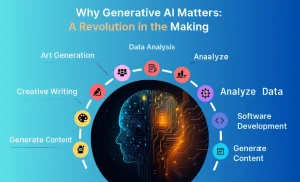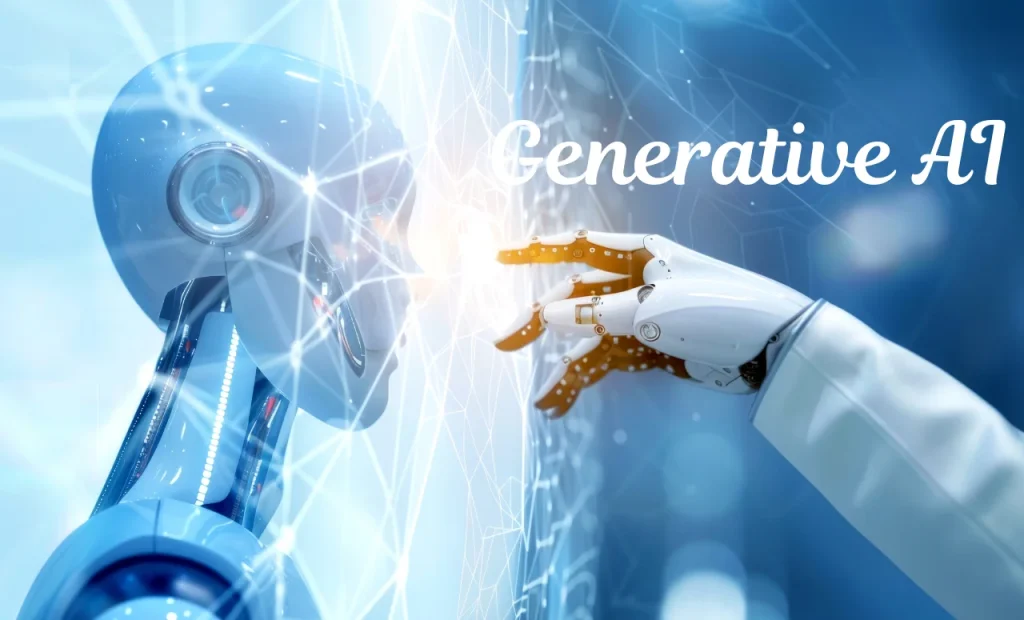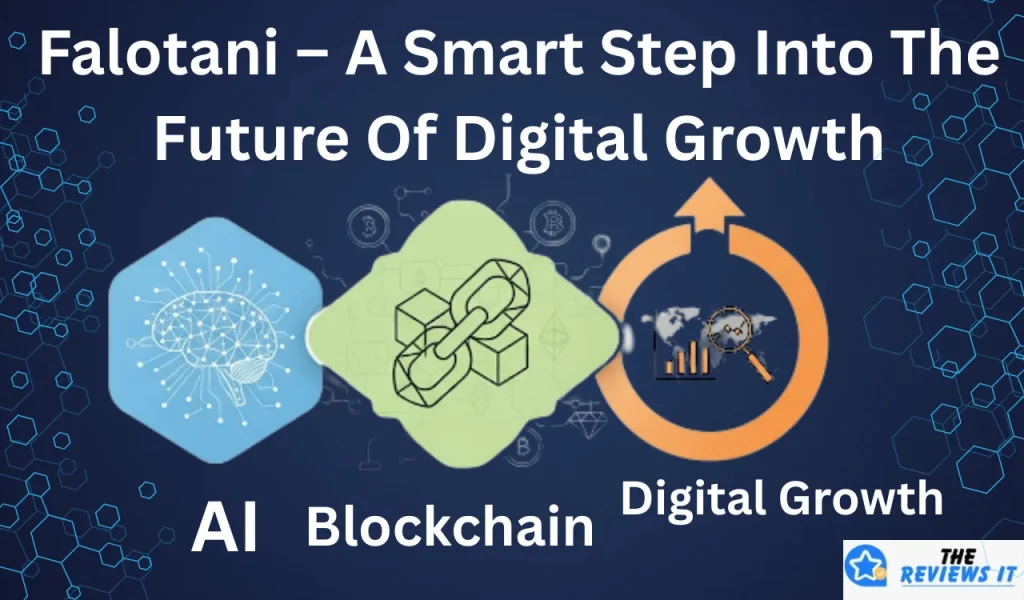You’ve almost certainly heard the term by now: Generative AI. It’s the technology that has taken the world by storm, powering everything from chatbots that can write poetry to image creators that can turn a simple sentence into a stunning work of art. But beyond the hype, what exactly is Generative AI, and why is everyone from tech CEOs to artists talking about it?
In simple terms, Generative AI is a type of artificial intelligence that doesn’t just analyze or classify data, it creates something entirely new.
The “Generative” Difference: From Analyzing to Creating
For years, the most common forms of AI were analytical. They were trained to recognize patterns and make predictions based on existing data. For example:
- An AI that looks at a picture of an animal and tells you if it’s a “cat” or a “dog.” (Classification)
- An AI that looks at historical sales data and predicts next month’s revenue. (Prediction)
Generative AI does the opposite. Instead of just labeling or predicting, it learns the underlying patterns and structures of data so well that it can generate brand new, original content that resembles the data it was trained on.
- You give it the prompt “a cat wearing a top hat,” and it creates a new image of exactly that.
- You ask it to “write a short story in the style of Edgar Allan Poe,” and it generates a new, original story that mimics his dark, gothic style.
Think of it like this: an analytical AI is like a music critic who can listen to a song and tell you its genre. A generative AI is like a composer who can listen to thousands of songs and then write a brand new piece of music in any style you ask for.
How Does It Work? The Magic of Models
The “brain” behind Generative AI is a massive, complex model, most often a type of neural network. These models are trained on enormous datasets.
- Large Language Models (LLMs) like GPT are trained on vast swathes of text and code from the internet.
- Diffusion Models (used for image generation) are trained on billions of images and their corresponding text descriptions.
During training, the model learns the intricate relationships, patterns, grammar, and styles within the data. Once trained, it can use this knowledge to generate new content based on a user’s input, known as a “prompt.”
This technology is becoming increasingly accessible, but to truly understand and leverage its power requires a deeper knowledge of the underlying principles. For those looking to build with this technology, a structured generative AI course can provide the essential foundation in neural networks, model training, and the ethics of AI.

Why Generative AI Matters – A Revolution in the Making
Generative AI is more than just a fun tool; it’s a transformative technology with the potential to reshape entire industries. Here’s why it matters so much:
- Democratizing Creativity and Content Creation: It gives everyone the power to be a creator. You no longer need years of technical skill to design a logo, compose a piece of music, or write a draft for a blog post. This lowers the barrier to entry for creative expression and content production.
- Augmenting Human Productivity: In the professional world, Generative AI is becoming a powerful co-pilot. It can help programmers write and debug code faster, assist marketers in brainstorming ad copy, and help lawyers summarize dense legal documents. It handles the repetitive, time-consuming tasks, freeing up humans to focus on strategy and critical thinking.
- Accelerating Scientific Discovery: Scientists are using Generative AI to design new proteins for drugs, create novel materials with specific properties, and simulate complex experiments, dramatically accelerating the pace of research and innovation.
- Personalizing Customer Experiences: Businesses can use Generative AI to create hyper-personalized marketing messages, product recommendations, and customer support interactions, making every customer feel uniquely understood.
The Future is Generative (And Requires New Skills)
The rise of Generative AI is also creating a new set of in-demand skills. “Prompt engineering”—the art of crafting the perfect prompt to get the desired output—is becoming a valuable skill. More importantly, there is a growing need for professionals who can build, fine-tune, and ethically deploy these powerful models.
As this technology becomes more integrated into our daily lives and business operations, understanding it will be crucial. For anyone looking to future-proof their career, taking a hands-on GenAI course is one of the most strategic moves you can make. It provides the practical skills needed to move from being a user of AI to becoming a builder and innovator in this exciting new field.
Conclusion – A New Partnership with Technology
Generative AI represents a fundamental shift in our relationship with technology. We are moving from simply using tools to collaborating with intelligent systems. It’s a technology that augments our intelligence, amplifies our creativity, and has the potential to help us solve some of the world’s most complex problems. The journey is just beginning, but one thing is clear: the world is being reshaped by Generative AI, and understanding it is key to understanding the future.









